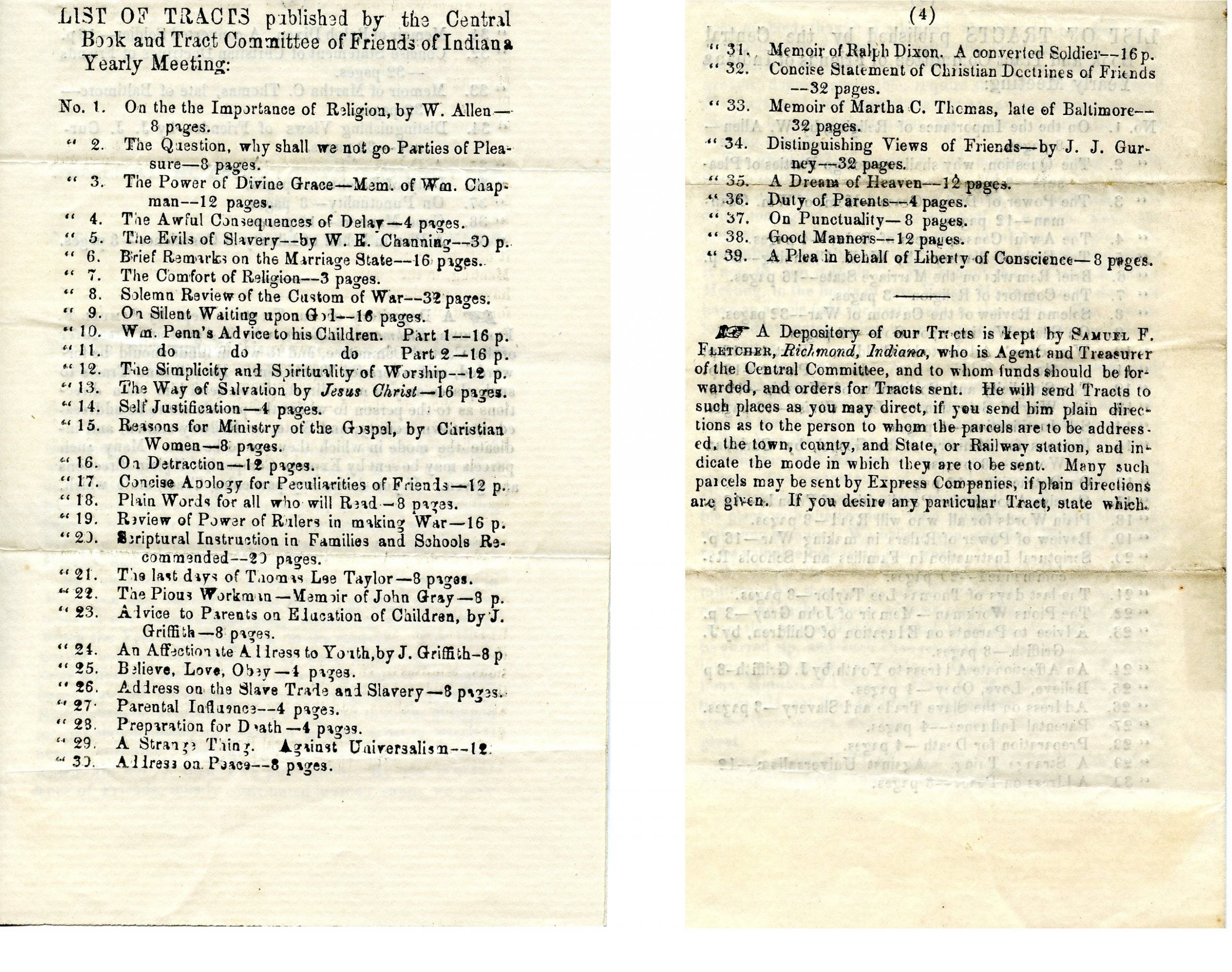To provide educational materials for its members, in April of 1830 Cincinnati Friends Meeting decided to establish a library. Within a month, 80 books and a number of pamphlets had been collected, and Ephraim Morgan was named the first librarian. The following December, he and several other Friends were appointed to “prescribe such regulations as they may deem necessary for the safe keeping, due distribution, return, and preservation of the books belonging to the meeting.” Two months later, they proposed these rules:
- The Library will be open on the afternoon of every Seventh Day from three to five o’clock.
- Every person obtaining books from the Library shall return the same within four weeks, or pay a fine of ¼ cent for each succeeding week until returned.
- No person shall be permitted to take out more than one book at a time on his own account.
- Every person is considered as entering under an obligation to be responsible for the book he takes out, which if lost he must replace within one month or pay the value thereof to be determined by the Committee charged with the care of the Library, together with such fines as may have occurred thereon, and until this be complied with, such person cannot be allowed the further use of the Library.
- In like manner, when it appears to the Librarian that a book has received material injury whilst in the possession of a borrower, the damage shall be ascertained and satisfaction must be made as in [the] case of loss.
- No person who borrows a book is to lend this same to any person out of his dwelling house.
- No person shall be permitted to use the Library until by subscribing to these articles either personally or by a representative he or she agreed to conform to these rules laid down.
Over the years, the library grew slowly, with some books even donated by Friends in England. By 1857, however, there were concerns that the library was not being used very much. The Book and Tract Committee eventually submitted a proposal “to remove the library to the house of one of our members, as the committee think better facilities would be thereby furnished to any wishing to avail themselves of it.” By 1862, the committee recommended that “the few books of this present library be sent to Joel Bean, for distribution in Iowa.” The meeting paid the expense of sending them there by carriage.
Although the library might not have been extensively used, tracts most certainly were. In 1851, Cincinnati Friends Meeting began regularly “procuring tracts on moral and religious subjects, in accordance with the doctrines of Friends, for circulation amongst Friends.” These 3- to 32-page pamphlets—on subjects ranging from theology to slavery to parenting to punctuality—were purchased through the Central Book and Tract Committee of Indiana Yearly Meeting. By 1858, Friends had begun distributing them not only to members of the meeting, but also more extensively throughout the community. In 1860, the Book and Tract Committee made the following report:
The work has been more largely participated in during the past year by members of our Society, other than those constituting the committee, than in any previous year. We hail this fresh token of religious interest in our branch of the Christian church, with thankfulness, and trust that during the present year, a still larger number will offer to engage in this good work. The number of tracts distributed since our last report, of which we have knowledge, is 20,043. Our labors have been widely extended over our own country, and in this city many of all classes have been reached, the inmates of our prisons, hospitals, and benevolent institutions have received attention, and we have met with kind receptions by our mechanics, merchants, and citizens generally.

This article comes from the book Friends Past and Present: The Bicentennial History of Cincinnati Friends Meeting (1815–2015). You can obtain a copy of the printed book or a Kindle version from Amazon.com. The proceeds of all sales go to Cincinnati Friends Meeting.

Thanks Sabrina. What would you say correlates to “tracts” in our day? Pendle Hill pamphlets?
I’d say they more likely correlate to the inexpensive tracts that are still used in modern Protestant evangelical circles. These tracts did not approach Pendle Hill pamphlets in their production quality, and although some of them touched on topics peculiar to Quakers (such as opposition to both slavery and war), they were theologically Orthodox. You and I might even run into some of these as we review the historic documents in our library!